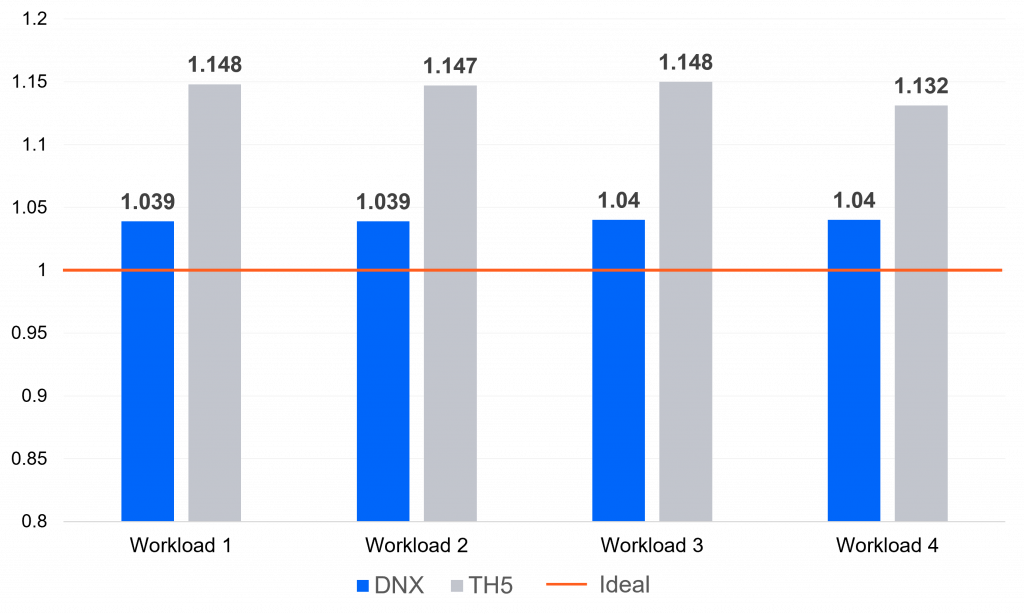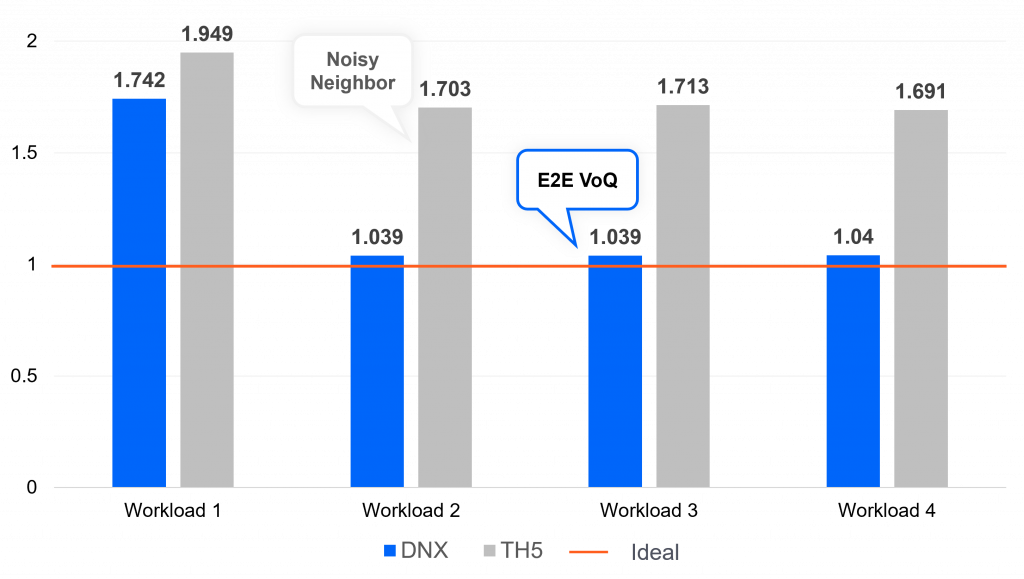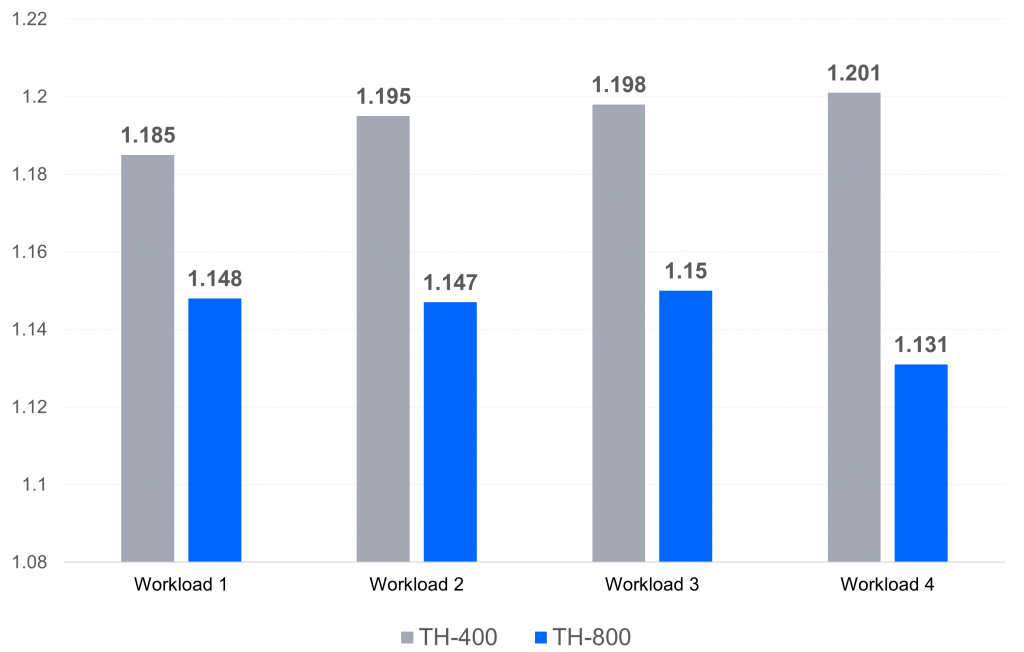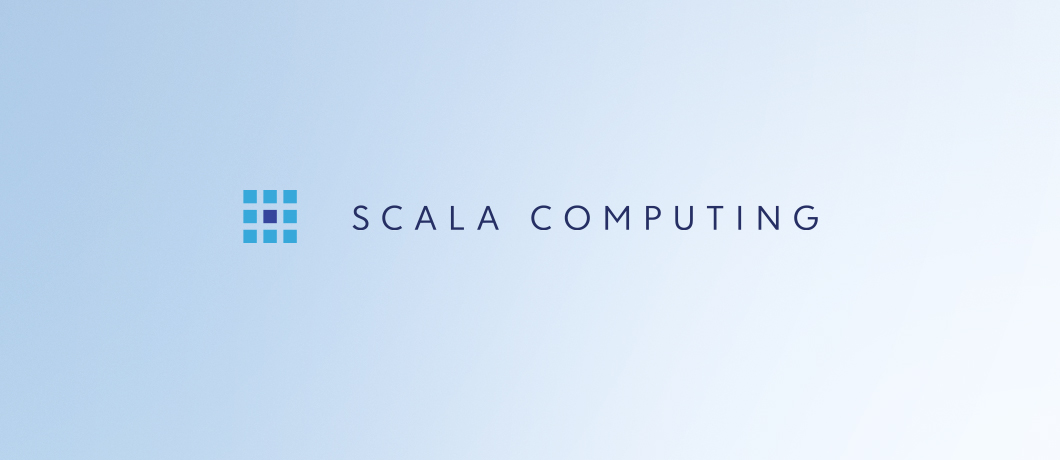|
Getting your Trinity Audio player ready...
|
Tests were conducted on a 2000 GPU setup, with each GPU connected to a 400Gbps Ethernet port.
Workloads used for the tests were machine-learning training workloads. Specifically, the process tested was collective reduction over RoCE (Remote Direct Memory Access [RDMA] over Converged Ethernet), with an NCCL (NVIDIA Collective Communications Library) dual B-tree.
Four workloads were run in parallel, split evenly between the 2000 GPUs, to simulate a multi-tenancy environment such as an AI cloud infrastructure. Such an environment needs to support multiple customers with their unique workloads on a single platform and maintain multi-tenancy guidelines such as data sovereignty, security, etc.
The measured results were compared to an ideal theoretical result, which was set as a reference plane with the value “1”. This ideal result is the forecasted result for a full-mesh, non-blocking architecture, in which all GPUs are connected directly to all GPUs, without any latency or degradation on the line. (This is a theoretical scenario for the purpose of benchmarking.)
The test was run in three phases:
- Steady-state stage, in which no impairments were introduced to the setup, measuring JCT performance of the infrastructure using an all-to-all collective between the 2000 GPUs.
- Impairment stage, in which a 50% throughput reduction was impaired onto the network interface cards (NICs) related to one of the four workloads. The aim of this test was to simulate a “noisy neighbor” environment and measure the impact on performance of each workload.
- Fabric speed stage, in which performance was compared for similar setups, where fabric line speeds were changed from 800Gbps to 400Gbps. The goal of this test was to measure the JCT performance impact due to hashing across ECMP groups in an Ethernet CLOS solution compared to DDC cell-based distribution.
Steady-state stage results

The following results were measured when testing workload JCT in the two architectures: DDC/DNX and Clos/TH5
The DNX-based DDC for AI Networking architecture showed a near-ideal JCT figure, thanks to its lossless, predictable and cell-based fabric. The TH5-based Ethernet Clos architecture, however, showed figures that are about 10% higher than DDC and around 14% higher than the ideal performance figure.
This is a significant result; a 10% improvement in JCT, over a long period of time (i.e., steady state) means one can use roughly 10% less GPUs to achieve the same results. This is a significant cost reduction for anyone wishing to build a large-scale AI cluster, as the network, which costs is around 10% of the entire setup, practically “pays for itself.”
At this stage, the noisy neighbor effect on each architecture is measured. This is important for a multi-tenancy environment, such as multiple enterprise workloads sharing the same GPU cluster and connectivity fabric for training or inference.
Impairing a 50% reduction on network interface cards (NICs) of workload 1 (of the four workloads in total), the test shows that the Ethernet Clos architecture has a linear effect on all workloads sharing the same infrastructure. This is due to the way the PFC (priority-based flow control) mechanism works. When a NIC experiences congestion, it signals “STOP” to the connected leaf switch. This switch subsequently back propagates this measure throughout the network, which results in a throughput decrease affecting all of the connected devices in the network

Performance degradation in the DDC architecture, however, is limited to the impaired connection only, thanks to the end-to-end virtual output queue (VOQ) mechanism.
A GPU noisy neighbor scenario occurs when the performance of one or more GPUs is negatively affected by the activity of other GPUs on the same node. This can happen for a variety of reasons, such as resource contention on the network or performance degradation on the NIC.
The results show that Network Cloud-AI is optimized for GPU noisy neighbor scenarios, ensuring no performance impact on other AI jobs running in parallel.
Fabric speed stage results
Lastly, fabric speeds were varied between 400Gbps and 800Gbps.
Since the Network Cloud-AI DDC architecture is based on a cell-based fabric, the fabric line speed does not affect the fabric performance and the customer can select a 400 or 800Gbps fabric according to its preference.
For an Ethernet Clos architecture, however, a 400Gbps fabric will need twice the number of ports, hence twice the ECMP (Equal-cost multi-path routing) group size, which degrades performance, as shown in the graphic below.

Results: Network Cloud-AI is faster, more reliable, and cost-effective
This independent testing of different architectures used as a back-end AI networking fabric reaffirms data from various field deployments, according to which the Network Cloud-AI solution yields the highest JCT performance, enabling faster training and deployment of large-scale AI models. This is true in both steady-state and impaired environments, insuring highest performance in a multi-tenancy environment. Fabric speed flexibility also allows a performance-proofed 400 to 800Gbps migration process.
FAQs for AI networking architecture
- What improvement does DDC architecture deliver?
DDC architecture provides a 10% improvement vs. Ethernet Clos architecture in terms of job completion time (JCT). - What prevents degradation in the DDC architecture?
Performance degradation in the DDC architecture is limited to the impaired connection only, thanks to the end-to-end virtual output queue (VOQ) mechanism. - Why does the fabric line speed not affect performance in the DDC architecture?
Since the Network Cloud-AI DDC architecture is based on a cell-based fabric, the fabric line speed does not affect the fabric performance and the customer can select a 400 or 800Gbps fabric according to its preference.
Related content for AI networking architecture
- DriveNets Network Cloud-AI
- Reduce Job Completion Time for AI Workloads with DDC
- Creating Lossless Connectivity Fabric with DDC
In short, the three main outcomes of this testing were:
- At steady state (i.e., no impairment), DDC architecture provides a 10% improvement vs. Ethernet Clos architecture in terms of job completion time (JCT).
- When endpoint (network interface card, NIC) impairment occurs, performance degradation affects only the impaired workload in DDC architecture, while service degradation is across all workloads sharing that infrastructure (due to the “noisy neighbor” phenomenon) in Ethernet Clos.
- Ethernet Clos performance degrades when using a 400Gbps fabric (vs. an 800Gbps fabric), while DDC performance is agnostic to fabric speeds.
Now let’s take a closer look at the testing methodology and the results of its three distinct stages.
Network architecture testing methodology
The following architectures were tested:
- Network Cloud-AI DDC (NC-AI DDC)<: a 2000x400Gbps port scheduled fabric architecture. This architecture utilized Broadcom DNX chipsets (specifically, Jericho3AI for the leaf nodes and Ramon3 for the spine) implemented in new white boxes from Accton, supporting 18x800Gbps client interfaces per box.
- Ethernet Clos: a 2000x400Gbps port Ethernet fabric architecture (Broadcom Tomahawk 5 for leaf and spine). The Tomahawk 5 (TH5) chipset was selected as an example of a high-end layer-2 switch in ASIC. Similar ASICs are available from other platforms.
Tests were conducted on a 2000 GPU setup, with each GPU connected to a 400Gbps Ethernet port.
Workloads used for the tests were machine-learning training workloads. Specifically, the process tested was collective reduction over RoCE (Remote Direct Memory Access [RDMA] over Converged Ethernet), with an NCCL (NVIDIA Collective Communications Library) dual B-tree.
Four workloads were run in parallel, split evenly between the 2000 GPUs, to simulate a multi-tenancy environment such as an AI cloud infrastructure. Such an environment needs to support multiple customers with their unique workloads on a single platform and maintain multi-tenancy guidelines such as data sovereignty, security, etc.
The test was run in three phases:
- Steady-state stage, in which no impairments were introduced to the setup, measuring JCT performance of the infrastructure using an all-to-all collective between the 2000 GPUs.
- Impairment stage, in which a 50% throughput reduction was impaired onto the network interface cards (NICs) related to one of the four workloads. The aim of this test was to simulate a “noisy neighbor” environment and measure the impact on performance of each workload.
- Fabric speed stage, in which performance was compared for similar setups, where fabric line speeds were changed from 800Gbps to 400Gbps. The goal of this test was to measure the JCT performance impact due to hashing across ECMP groups in an Ethernet CLOS solution compared to DDC cell-based distribution.
Steady-state stage results

The following results were measured when testing workload JCT in the two architectures: DDC/DNX and Clos/TH5
The DNX-based DDC for AI Networking architecture showed a near-ideal JCT figure, thanks to its lossless, predictable and cell-based fabric. The TH5-based Ethernet Clos architecture, however, showed figures that are about 10% higher than DDC and around 14% higher than the ideal performance figure.
This is a significant result; a 10% improvement in JCT, over a long period of time (i.e., steady state) means one can use roughly 10% less GPUs to achieve the same results. This is a significant cost reduction for anyone wishing to build a large-scale AI cluster, as the network, which costs is around 10% of the entire setup, practically “pays for itself.”
At this stage, the noisy neighbor effect on each architecture is measured. This is important for a multi-tenancy environment, such as multiple enterprise workloads sharing the same GPU cluster and connectivity fabric for training or inference.
Impairing a 50% reduction on network interface cards (NICs) of workload 1 (of the four workloads in total), the test shows that the Ethernet Clos architecture has a linear effect on all workloads sharing the same infrastructure. This is due to the way the PFC (priority-based flow control) mechanism works. When a NIC experiences congestion, it signals “STOP” to the connected leaf switch. This switch subsequently back propagates this measure throughout the network, which results in a throughput decrease affecting all of the connected devices in the network

Performance degradation in the DDC architecture, however, is limited to the impaired connection only, thanks to the end-to-end virtual output queue (VOQ) mechanism.
A GPU noisy neighbor scenario occurs when the performance of one or more GPUs is negatively affected by the activity of other GPUs on the same node. This can happen for a variety of reasons, such as resource contention on the network or performance degradation on the NIC.
The results show that Network Cloud-AI is optimized for GPU noisy neighbor scenarios, ensuring no performance impact on other AI jobs running in parallel.
Fabric speed stage results
Lastly, fabric speeds were varied between 400Gbps and 800Gbps.
Since the Network Cloud-AI DDC architecture is based on a cell-based fabric, the fabric line speed does not affect the fabric performance and the customer can select a 400 or 800Gbps fabric according to its preference.
For an Ethernet Clos architecture, however, a 400Gbps fabric will need twice the number of ports, hence twice the ECMP (Equal-cost multi-path routing) group size, which degrades performance, as shown in the graphic below.

Results: Network Cloud-AI is faster, more reliable, and cost-effective
This independent testing of different architectures used as a back-end AI networking fabric reaffirms data from various field deployments, according to which the Network Cloud-AI solution yields the highest JCT performance, enabling faster training and deployment of large-scale AI models. This is true in both steady-state and impaired environments, insuring highest performance in a multi-tenancy environment. Fabric speed flexibility also allows a performance-proofed 400 to 800Gbps migration process.
FAQs for AI networking architecture
- What improvement does DDC architecture deliver?
DDC architecture provides a 10% improvement vs. Ethernet Clos architecture in terms of job completion time (JCT). - What prevents degradation in the DDC architecture?
Performance degradation in the DDC architecture is limited to the impaired connection only, thanks to the end-to-end virtual output queue (VOQ) mechanism. - Why does the fabric line speed not affect performance in the DDC architecture?
Since the Network Cloud-AI DDC architecture is based on a cell-based fabric, the fabric line speed does not affect the fabric performance and the customer can select a 400 or 800Gbps fabric according to its preference.
Related content for AI networking architecture
Download the report
Scala Computing DriveNets Simulations External Report




